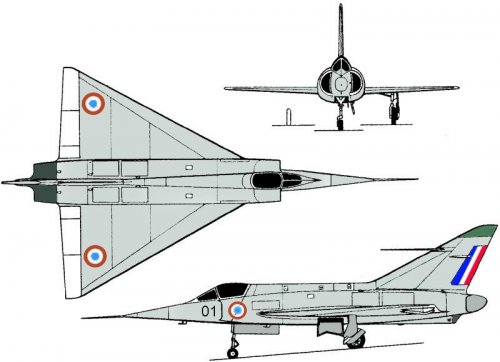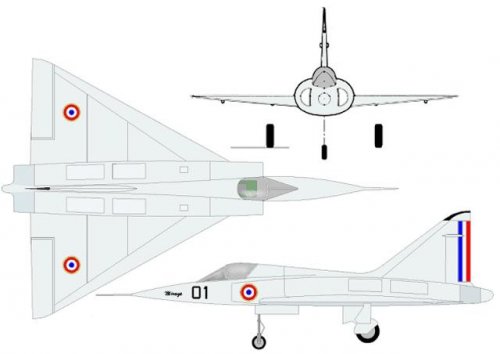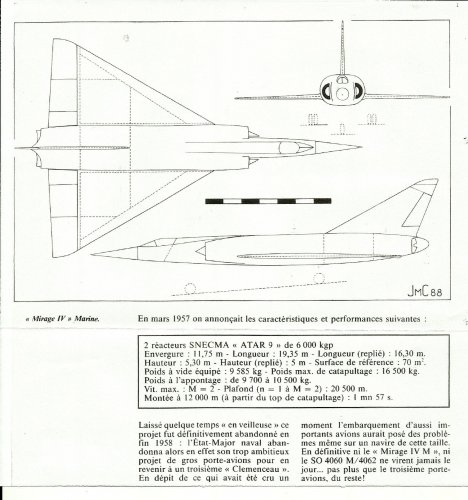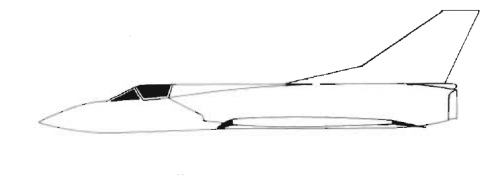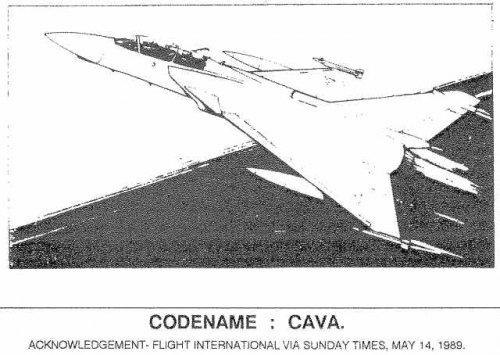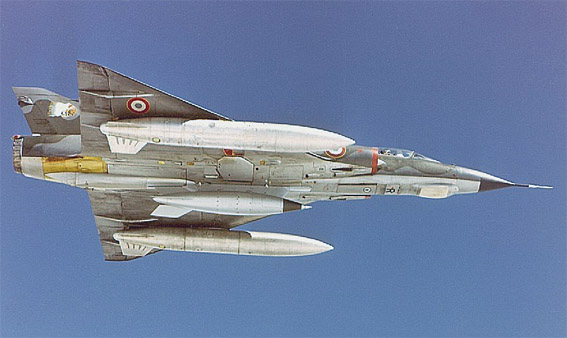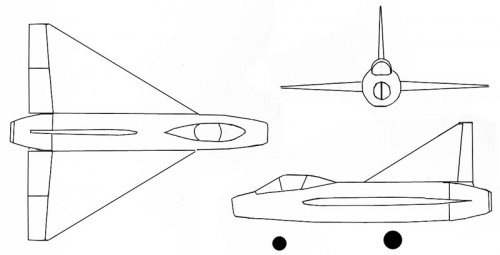Wrong. Ever heard of the Mirage III-E variant ? it did the exact same job the German F-104s did - low level penetration with a AN-52 nuke on the belly. First flight happened on April 5, 1961
I don't think you have paid much attention to the detailed points that I have made.
Everyone is familiar with the Mirage IIIE. But the fact that a high-altitude interceptor was adapted as a low-level nuclear strike aircraft (somewhat later on, I believe) is of no consequence. The Mirage was chosen because it was the production aircraft that France had available. It was NOT chosen because it was the optimal design for the task or because it had the needed ridequalities and low gust response. The B-52 has been operated for low-level flight too. But no one would have selected it FOR low-level flight.
To reiterate, a large-area, lightly loaded delta like the Mirage's is almost as ill-suited to this flight regime as is a high-aspect-ratio, moderately swept wing like the B-52's. The delta's only advantage would be the low aspect ratio and comparative stiffness of this wing form. Gust response would still be poor and ride would be harsh,given the low wing loading. So, while I don't know the numbers, I expect that, for aerodynamic reasons alone, Mirage IIIEs flew less of their mission profile at truly low altitude and flew low at significantly lower speeds than F-104Gs.
This difference in low-level performance might or might not have been operationally significant, even if the experts of the time had correctly forecast future needs (which they didn't). But it doesn't matter. This kind of performance was BELIEVED to be important at the time. So the aircraft most likely to deliver it was going to be the winner.
Finally, attributing everything to bribery is a lot like conspiracy theory. The fallacy is not that bribery and conspiracy do not occur. History is full of both. The fallacy is the belief that bribery and conspiracy determine outcomes. Usually they don't. The reason is simple. It just isn't safe to take a bribe and then do something totally unexpected. The trick is to take the bribes to do what everyone expects--and what you would tus have had to do even without a bribe.
I have actually been in on the details of one case of international bribery. The persons who paid and took bribes never had any actual effect on the way the contracts were awarded. The solicitors of the bribe were not in a position to swing the deal, but were just clever enough, at an early stage, to see which way the competition was likely to go. So they sought a side profit on the result. The bribe payers saw more or less the same thing. For them, the payoff was the chance to take credit for a by then predetermined outcome. The contract was awarded as it would have been in any case. But, thereafter, a long-running business relationship was ruined. Once the chicanery was discovered, companies were barred from future bids, several high-ranking people lost jobs, a few people were prosecuted, and many others had to be careful about crossing certain borders thereafter. The bribes didn't change the outcome in the way they were supposed to. They just caused a lot of unanticipated collateral damage, most of it to the parties involved.
So I stick by my thesis. Given the time frame, the competing projects available, and the mission imagined for the aircraft, selection of the F-104G was largely foreordained. It was the only aircraft that could make a plausible low-level strike system. This plausibility was largely due to the happy accident of its wing planform. Like the later Mirage IIIC, the high-altitude F-104A needed a lot of structural strengthening to adapt it to the new role. It just happened that the F-104's tiny, stiff little trapezoid was much better for low-level flight than a delta. So, once it was beefed up into the F-104G, it looked much better for the role than any of its big-wing competitors.
Of course, once perceived defense requirements in the West started to emphasize conventional strike and close support, the F-104G no longer looked like a particulary good choice. The little wings couldn't carry the weapons loads required or support the kind of endurance needed for loitering over a battle field at medium altitude. In hindsight, the F-104 was an awful choice. But, in hindsight, given the lack of a European war during the same period, spending good money on ANY weapons system was a waste.

